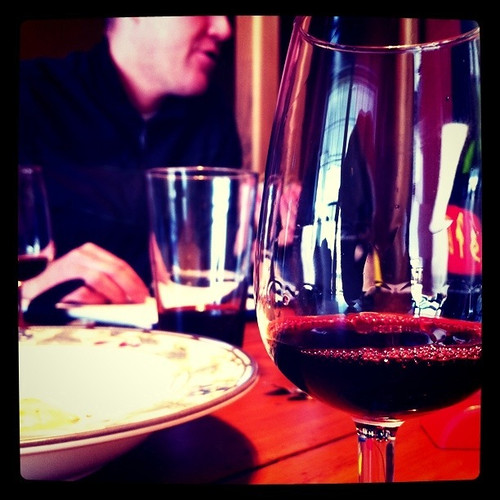Winemakers use samples to gain insight into the development of their wine. For the public, a barrel tasting is a great way to learn and partake in some aspect of the winemaking process. Most importantly, barrel sampling is an exclusive and fun event. You may have the opportunity to try a barrel sample if you visit a winery, and many California wine festivals are now showcasing young wines from the barrel to the general public. If you are fortunate enough to take part in a barrel tasting, remember that you are not drinking the finished product, the sample is a small reflection of what you may expect from the bottle.
Winemakers use barrel samples to check the wine’s aging and progression. Wines are constantly evolving based on hundreds of variables. After taking a sample, a winemaker may use a number of techniques to adjust the levels of sugar and acidity, and even the oaking treatment. Peachy Canyon‘s blog notes in ‘A Crash Course in Barrel Tasting’ another important aspect of barrel samples:
“One of the more interesting aspects of barrel tasting is the incredible variation. Most wines are the result of blending together multiple barrels (if not multiple barrels of multiple varietals). Although a winemaker selects barrels specifically, each barrel is slightly individual, and there will be some variance from one to the other (one barrel, for example, might give off more of a toast flavor than its neighbor), due to subtle differences in coopering, age, and conditioning.”
When analyzing a barrel sample you are still looking at the wine as you would if it was from the bottle, but there will be certain characteristics that will be attributed to its youth and what stage of aging it is in. As mentioned in Tastes Peachy, with red wines there may be significant gas on the nose with subtle fruit notes, and the palate will tend to be overwhelmed with tannins and acidity at first taste. The most important thing to remember is that a barrel samples are not a finished wine.

We were fortunate enough to receive a sample of the Meyer Family Vineyards‘ 2011 Gewürztraminer and sat down recently to really enjoy this unique experience.

The 2011 Gewürztraminer sample was showing very well. White varietals such as Gewurtz are not usually intended to age as long as red wines, so the time between a sample and bottling is not as long. A portion of the grapes were whole bunched pressed, which can help with the drainage of the juice from the grapes. The remaining grapes were left with their skins for a short period, this can help extract greater flavour as well. However, too much contact with the skins in white varietals can cause unwanted astringency in the wine; we did not notice this in our sample. Both batches of grapes were then gently pressed, rigorous press would again induce stronger astringency in the wine. All grapes were then combined for a long cool fermentation in stainless steel vat. The cooler temperature helps create a more light and fruity wine. The wine is then aged for several months sur lie, before bottling. We noticed some bready or yeasty characteristics that would have come from the process of leaving the wine on its lees. This process is common in Chardonnays, adding a creaminess and also affecting the clarity.
We are excited to try the 2011 Gewürztraminer after bottling and compare our previous notes. We can expect a rich textured wine with strong acidity to balance the spice and savoury qualities.
If you haven’t been invited to try a barrel sample, you may have to schedule ahead of time to find a winery that will host you. There are many more unique opportunities where you can sample wines during your holidays. Travel to Wellness has a comprehensive list of Canadian wine and food festivals where you can taste many producers in one convenient location. Closer to home, the Rocky Mountain Food and Wine Festival, May 4-5 in Banff, is a chance to indulge in rare wines and meet some of the producers. We are also approaching the tasting season of our neighbouring BC vineyards. Visit BC Wine for easy reference to BC wine regions and mapped locations of wineries such as Meyer Family in Naramata.






















